Spotlight > Whistle Maker by Country > United Kingdom > Hudson > 019 ACME Round Whistles
Whistory
On page 45 of More Whistles by Martin Gilchrist, one sees the beginning of a series of whistle models, 045, 046 and 047 as noted in a 1910 catalog, and a Hudson commercial traveler’s tag. The first was called the Acme Registered round whistle.
Over the years since, we have found at least 20 variations including a larger model. These are perhaps the most variations in only a few models found in one company’s run of whistles. They range in sizes, stamps, construction — spanning almost 50 years.
The End of an Era of Certain Round Whistles.
None are listed in the 1935 catalog by Hudson and seem to drop off the map. However, there are two models shown in their 1910 catalog and from there a couple of model numbers can be found, one with a round knop, one with a top ring. Additionally, More Whistles pictures on page 46 one with a tag 045.
From the onset of the The Acme name which was registered in 1886, further stamps emerged ( i.e. Acme, Acme City, The Acme Boy Scouts etc. )
The Patent 435 stamp accompanies all of the earliest models and continued beyond the 14 year patent period per se. So, dating these correctly in succession proves more and more difficult as variations, possibly using old parts seem to overlap production.
A Sequential Order Over 50 Years Long
So, we have arranged the sequence by using the parts and noting this as they are presented. The Acme round appears to be one of Hudson’s longest running whistles in production from circa 1885 to circa 1930.
To help organize them for research, we have grouped them according to characteristics.
Whistle classification
| Category | gsw/rounds |
| Class | Hudson |
| Type | general service railway |
| Class | brass |
| Sub class | hollow knop tops cast loop tops cast round knops 2 piece tops pillar domed stepped |
Whistle Archeology
A 1910 single catalog page featuring two models upper left
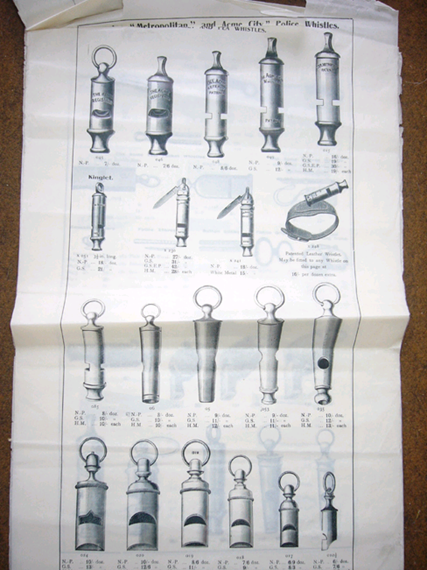
Whistology
We have recorded others not held here at the reference collection, here are 17.
These are set in order of date characteristics only.
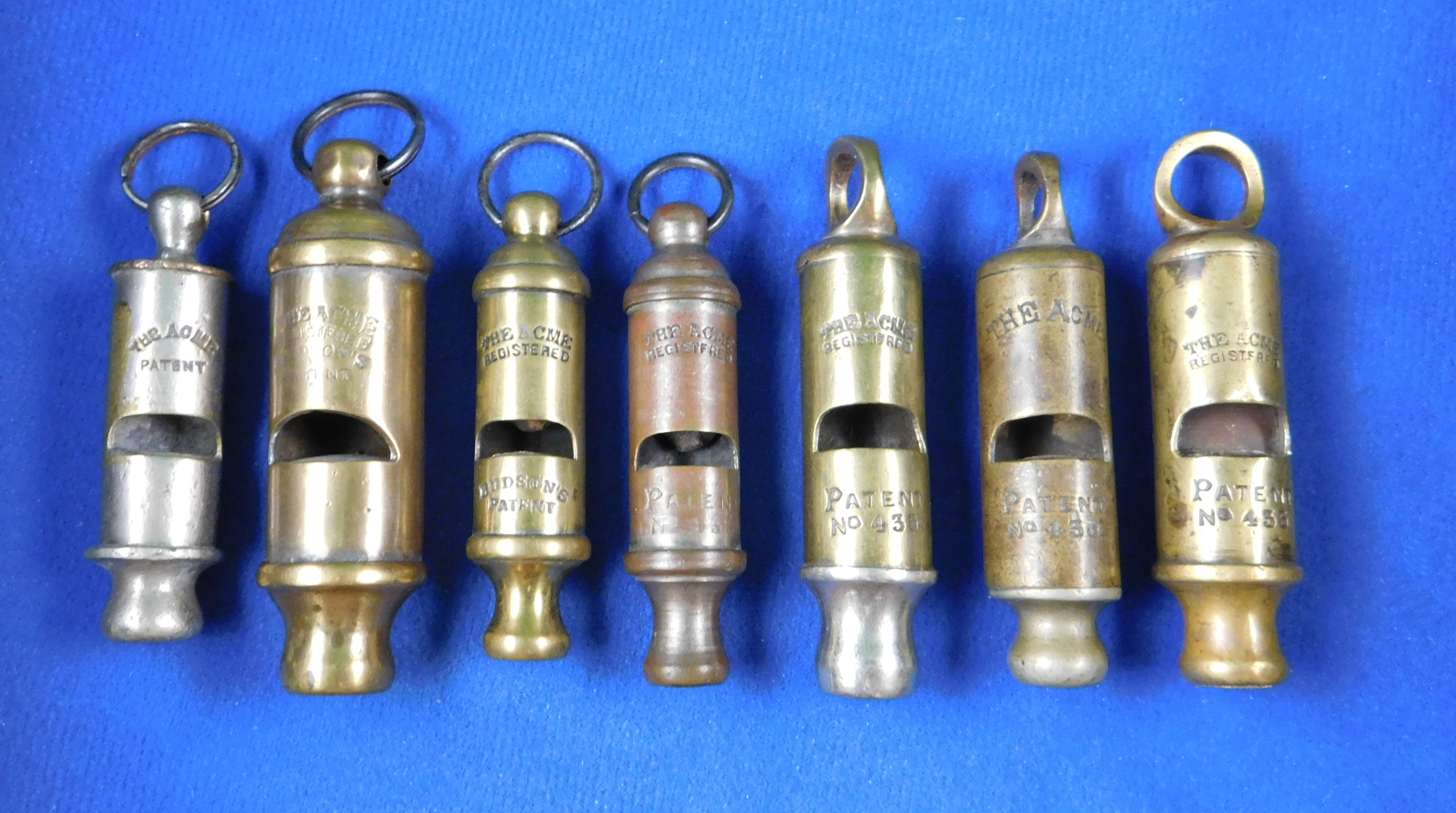
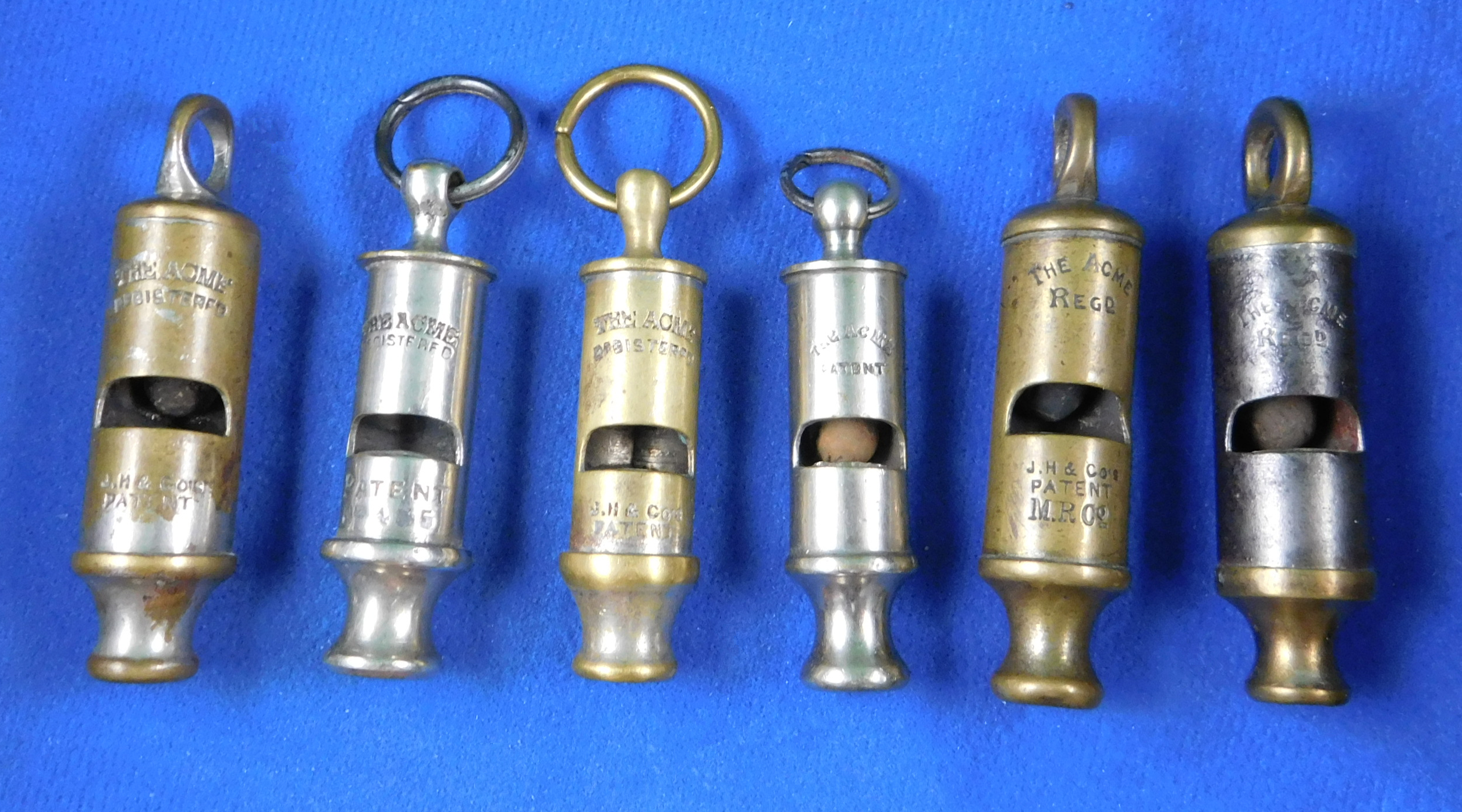
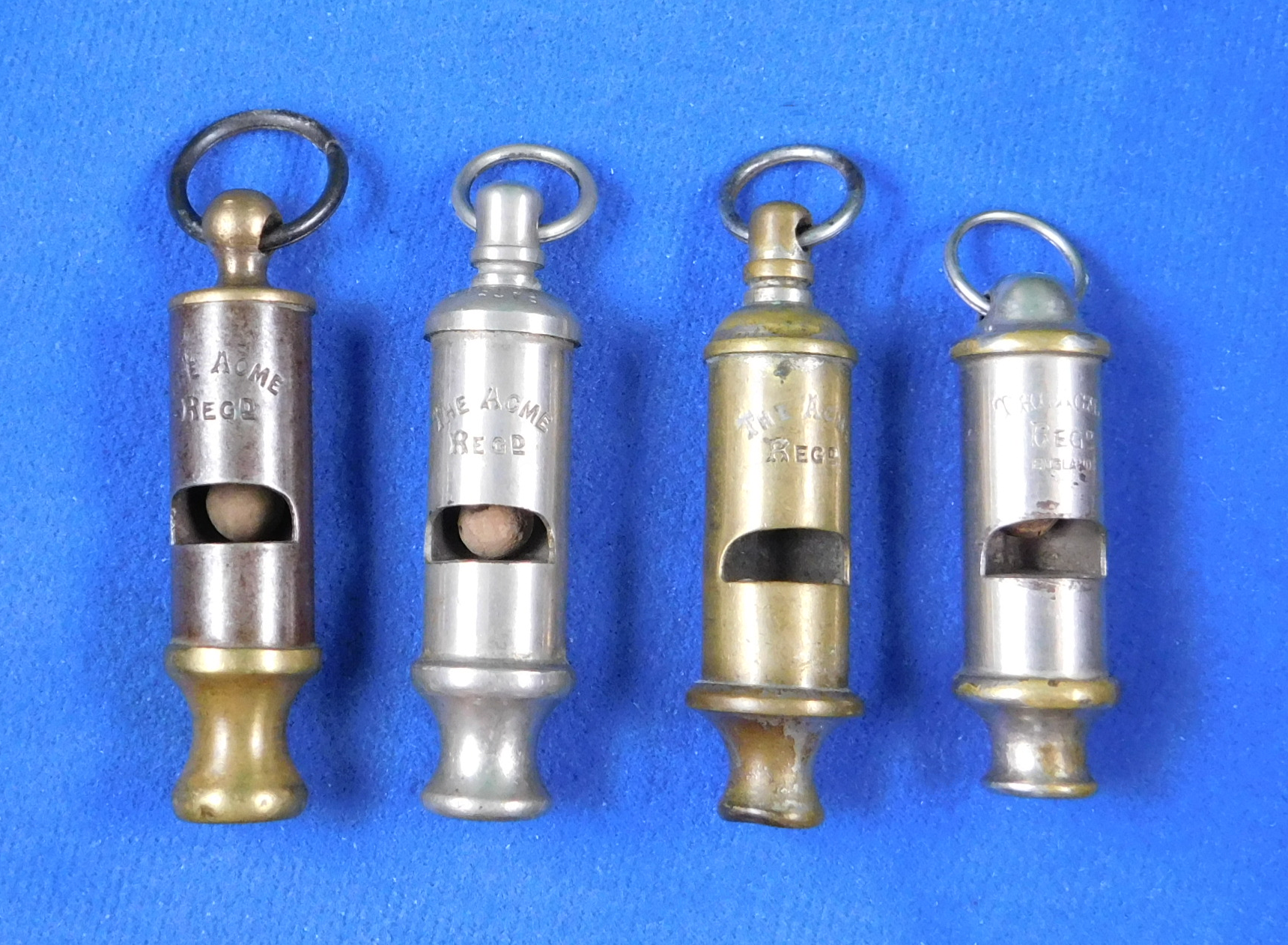
Group 1, ACME Round Whistles
In group 1 below, the first whistle has a cast top and the mouthpiece appears very early, or at least is an older part. The disc is particularly unusual. It is cast and incomplete, that is, it is cut across the front edge of the window, then is has another piece perpendicular downwards
On page 45 of More Whistles the picture of Acme rounds features a wider model with square windows. The second whistle from the left pictured here is a larger model with a half round window. Furthermore, there is no disc, but a very truncated wedge. Half the depth of the usual wedge. The beveled mouthpiece is machine rolled typical of James Hudson.
Gilchrist has his hollow knops dated to 1890s. however it would appear more accurately 1885 to 1889, the patent stamp for 435 being a little more loosely applied. The inside edge of the mouthpiece is slightly threaded.
The 3rd and 4th whistles are very similar with the exception of the lengths of the mouthpieces. The disc is stamped in both with Hudson’s patent indicative of circa 1890.
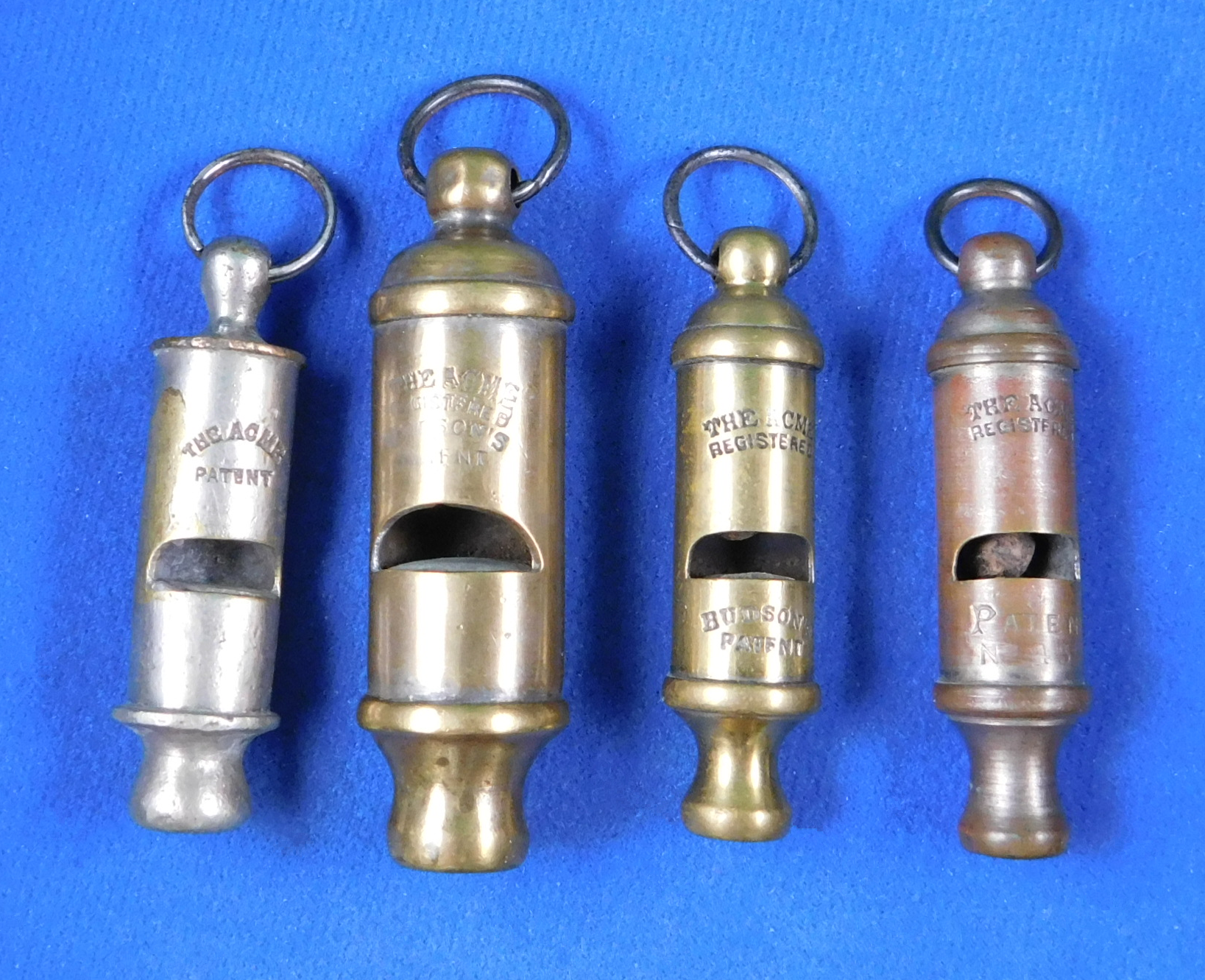
Group 2, ACME Round Whistles
Group 2 starts off with the whistle pictured in More Whistles noted by Gilchrist as made by James Hudson. This helps serve as a bench mark as James died in 1889.
There are some surprises once we look inside of these. No surprise is that they all have Hudson’s patent stamped on the discs.
Three of the four are Acme Registered, however the one with the cast mouthpiece, which would seem to be older is not registered and as a trademark would be 1927. However, it does have patent 435 stamped on it, placing it in the group of 1885 to 1889
3rd from the left is a real surprise. It is an Acme round in most respects, except it is also a GSW with two windows. Add to this that each window is different. One window is wide typical of Hudson windows. The other window is half round. The mouthpiece opening appears to be machined yet has a thin liner trimming the inside edge.
Lastly only the fourth whistle from the left appears to be ‘typical’.
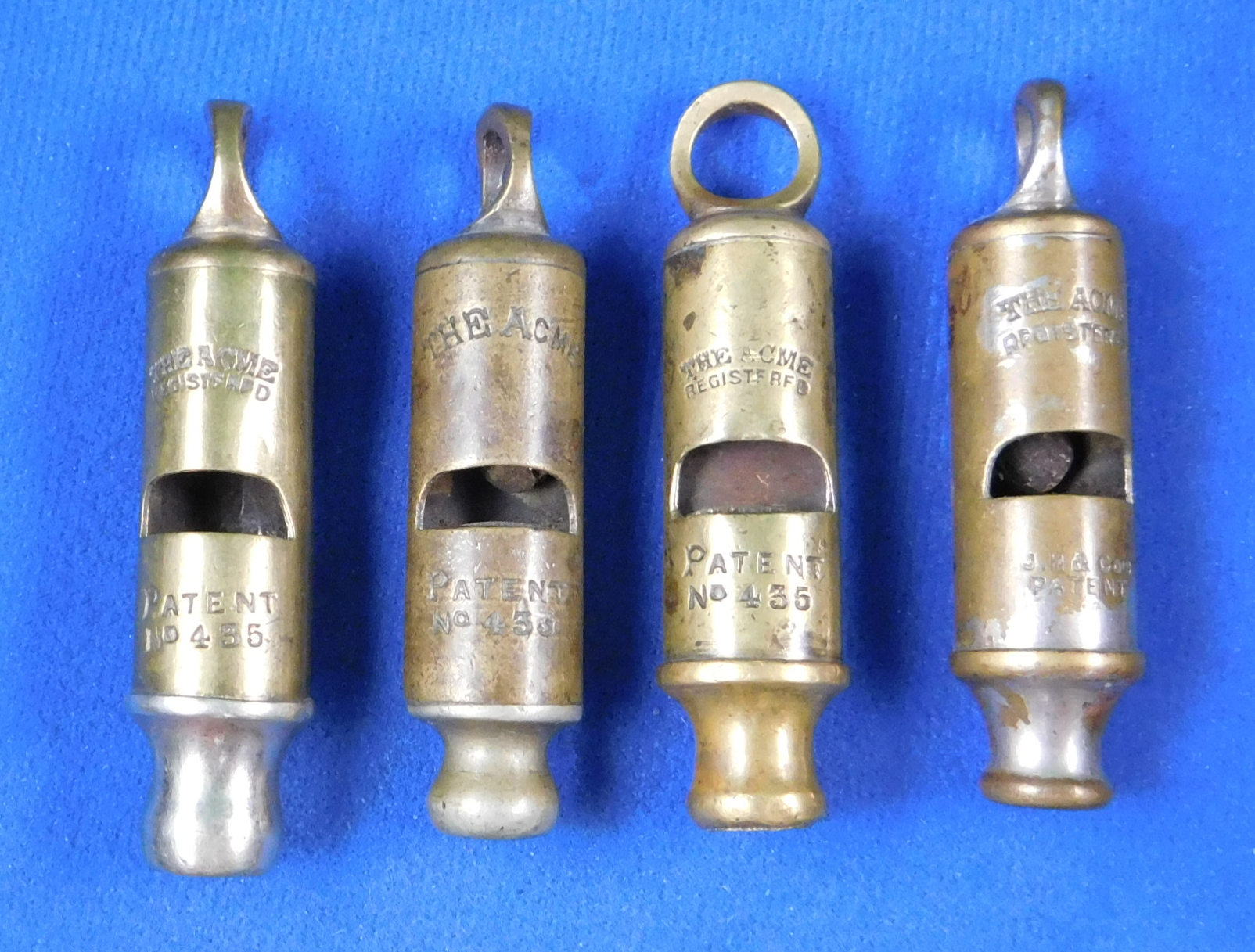
The next whistle is a ‘breakout’ of the other acme rounds. We give it special attention.
Possibly an experimental ‘rough’ example. Special thanks to James Guttridge.

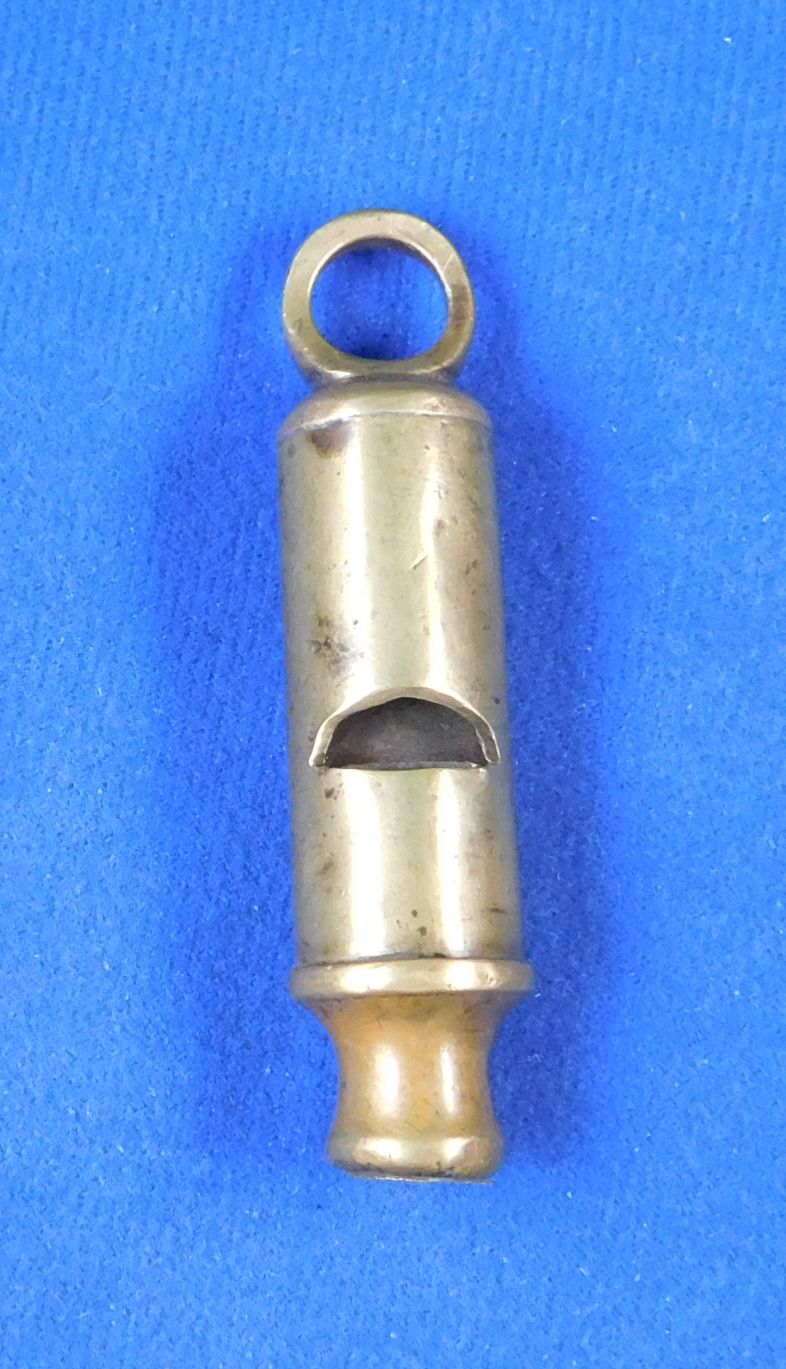
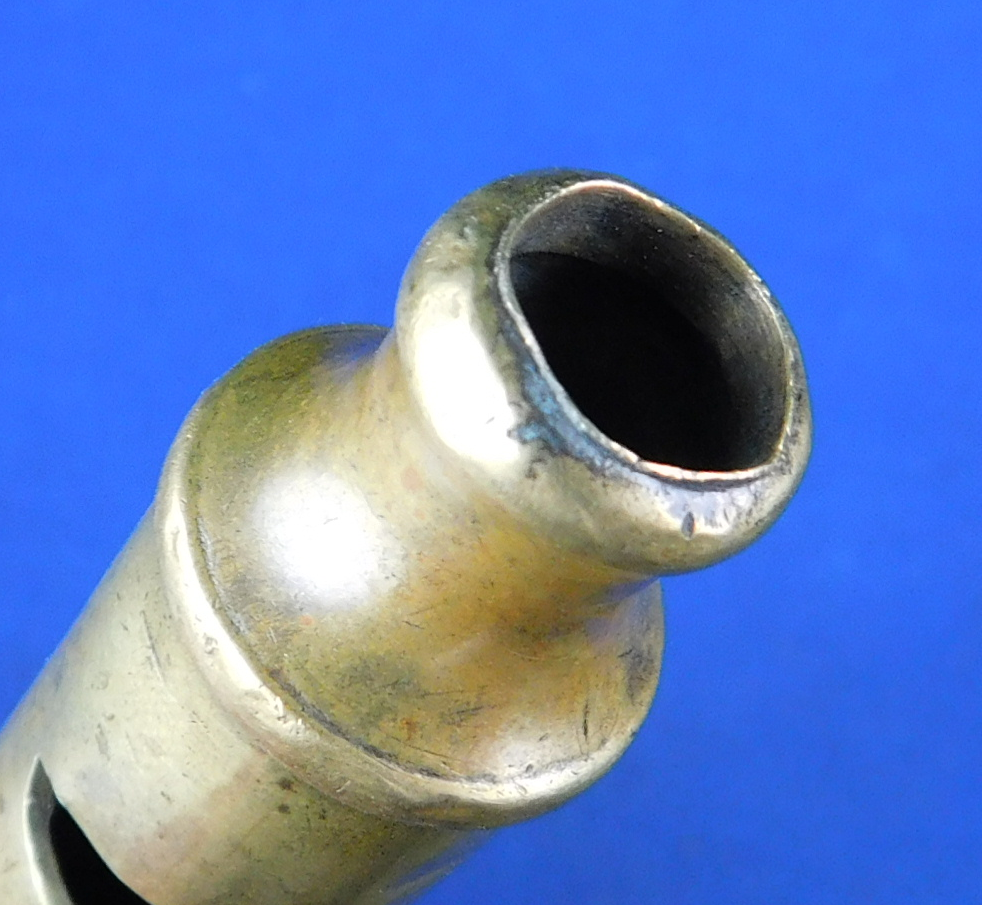
Group 3, ACME Round Whistles
Group 3 has round cast knops. The 1st from the left is stamped Hudson’s patent on the disc, the other two do no. All have different shaped mouth pieces, and each has tines still toward the mouthpiece like (d) in CPWs. Circa 1890s.
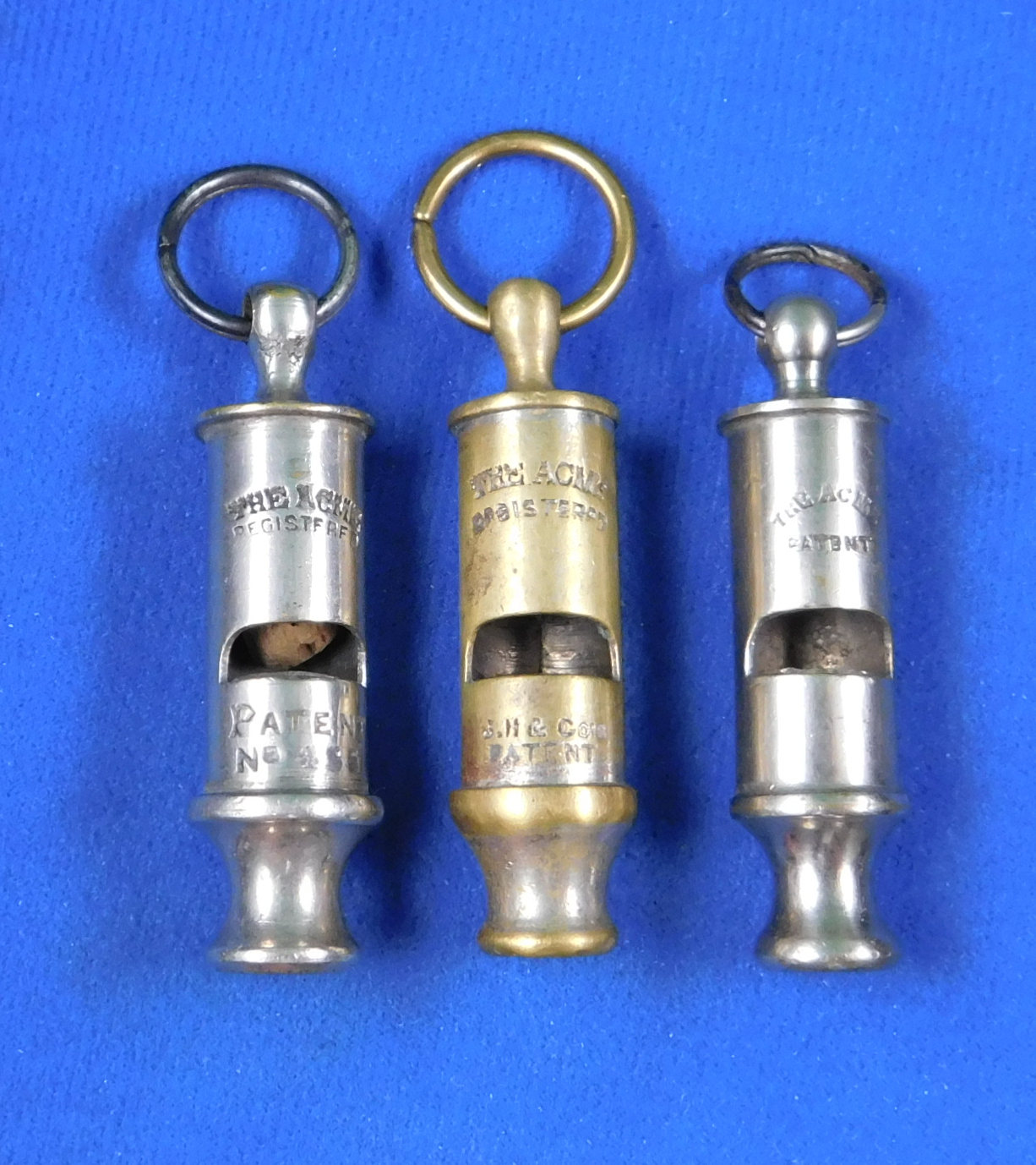
Group 4, ACME Round Whistles
Group 4 features two-piece ringed tops circa 1098 to 1922. Interestingly the 1st on the left still has the Hudson’s patent stamp on the disc and both still have the tines toward the mouthpiece. In fact, the tines point towards the mouthpiece typical on all Acme rounds. They never reverse direction and point up to the top as in tube shaped whistles.
The steel and brass model clearly is later, but how much later? Steel and brass were seen during the teens parallel to World War one. No top stamps on the caps.
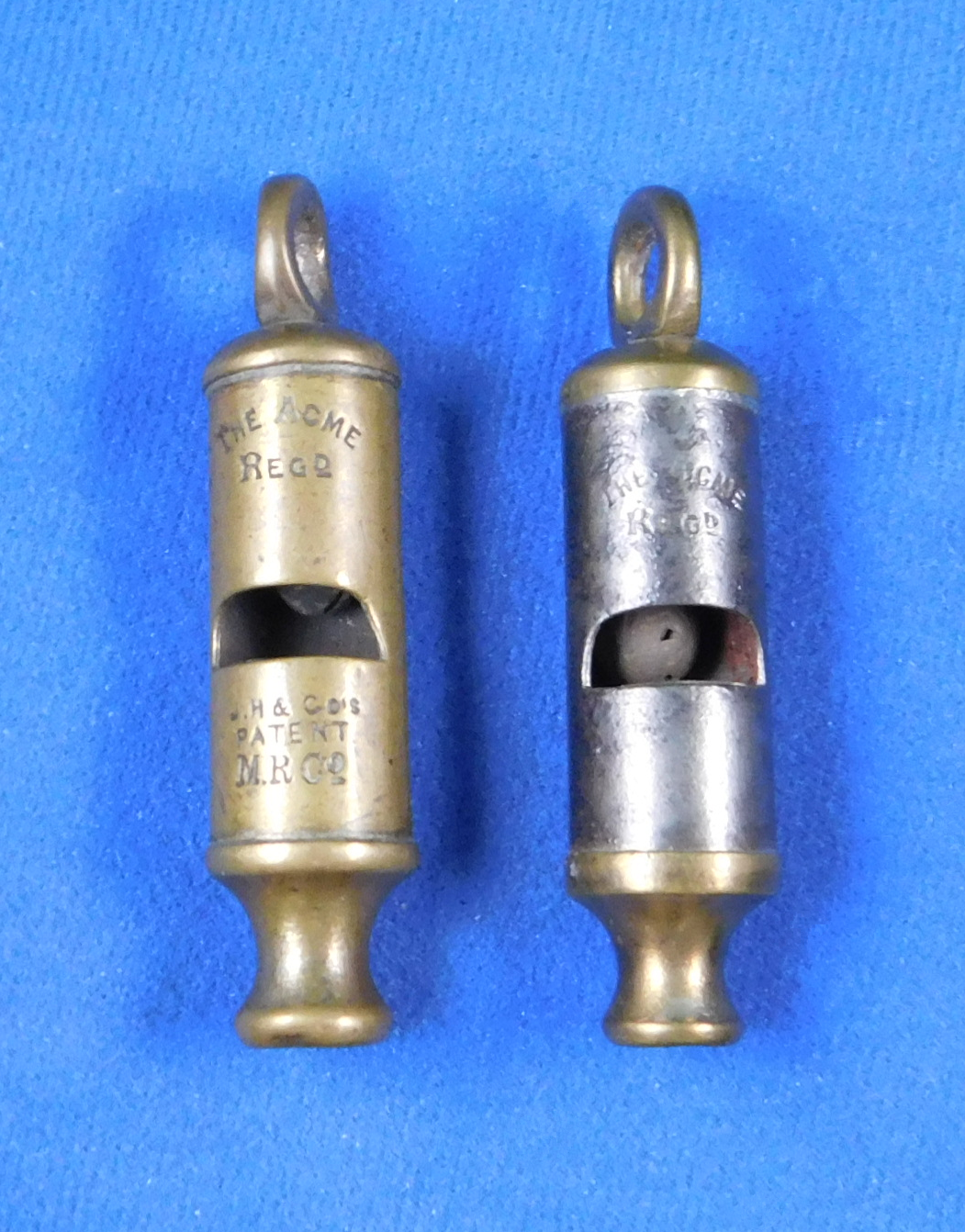
This picture features a progression of ringed tops left to right, cast, two-piece early, two piece later.
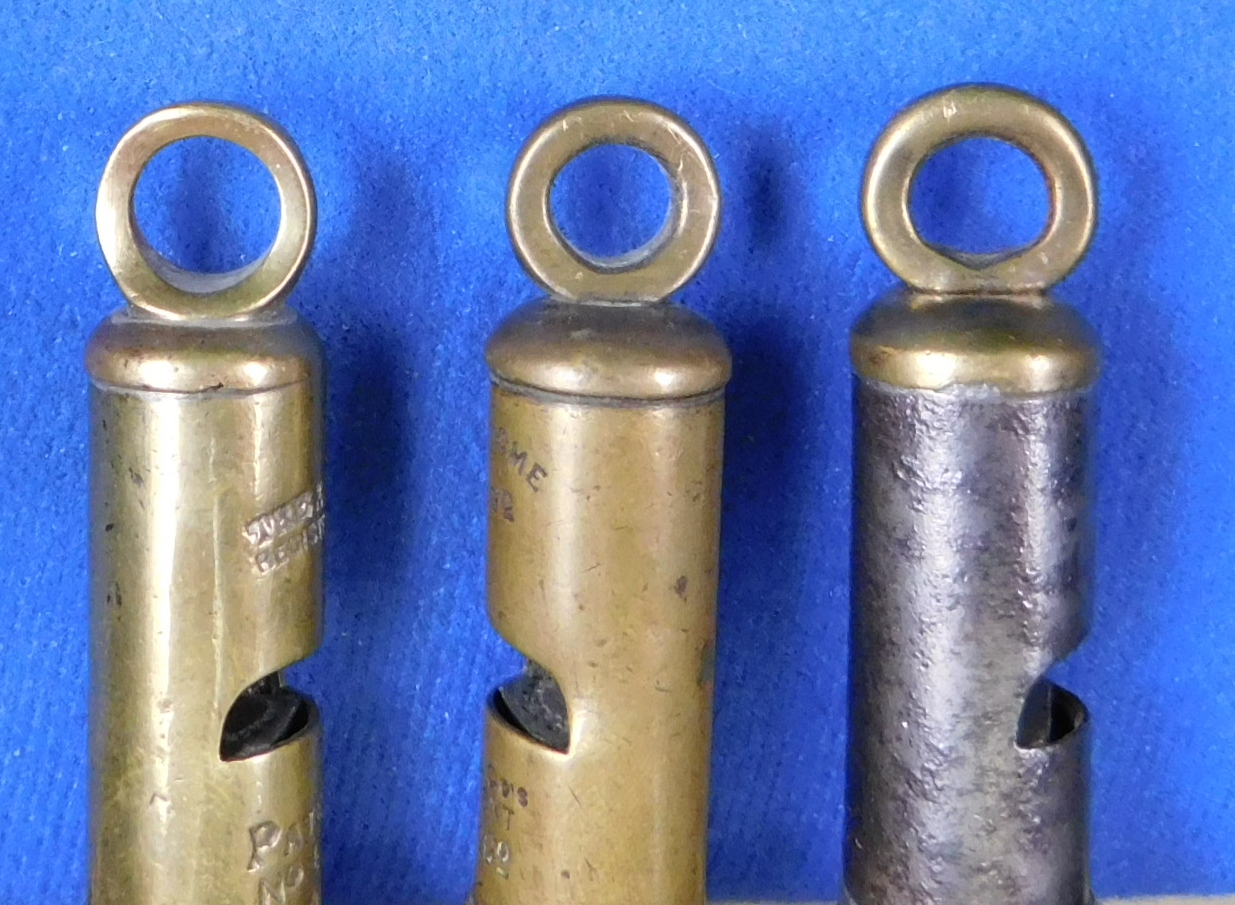
Group 5, ACME Round Whistles
Group 5 is circa 1910-1930. They have one identifying feature. The tines are half size, smaller, still pointing toward the mouthpiece, the first to the left appears to be the oldest, possibly still in the teens with steel and brass construction.
The second from the left has a stamp on the top cap for the two piece patent ( 5727-08 ), which dates it from 1908 to 1022. The third from the left has a ‘stepped top cap circa 1920-30. Lastly the domed top cap circa 1930.

Conclusions:
Acme GSW/rounds presented a remarkable continuous run from inception for possibly 50 years. This was made possible by Hudson keeping them in production trailing off circa 1930-40
TWG
Posted August 07, 2013
Revised August 17, 2020
Revised October 11, 2020
Revised February 12, 2021
Revised December 30, 2021
Revised February 19, 2022
Revised June 12, 2022
Bibliography:
Catalog Hudson whistles 1910
Catalog Hudson whistles France 1930-40
More Whistles by Martyn Gilchrist
The Whistle Gallery reference collection









